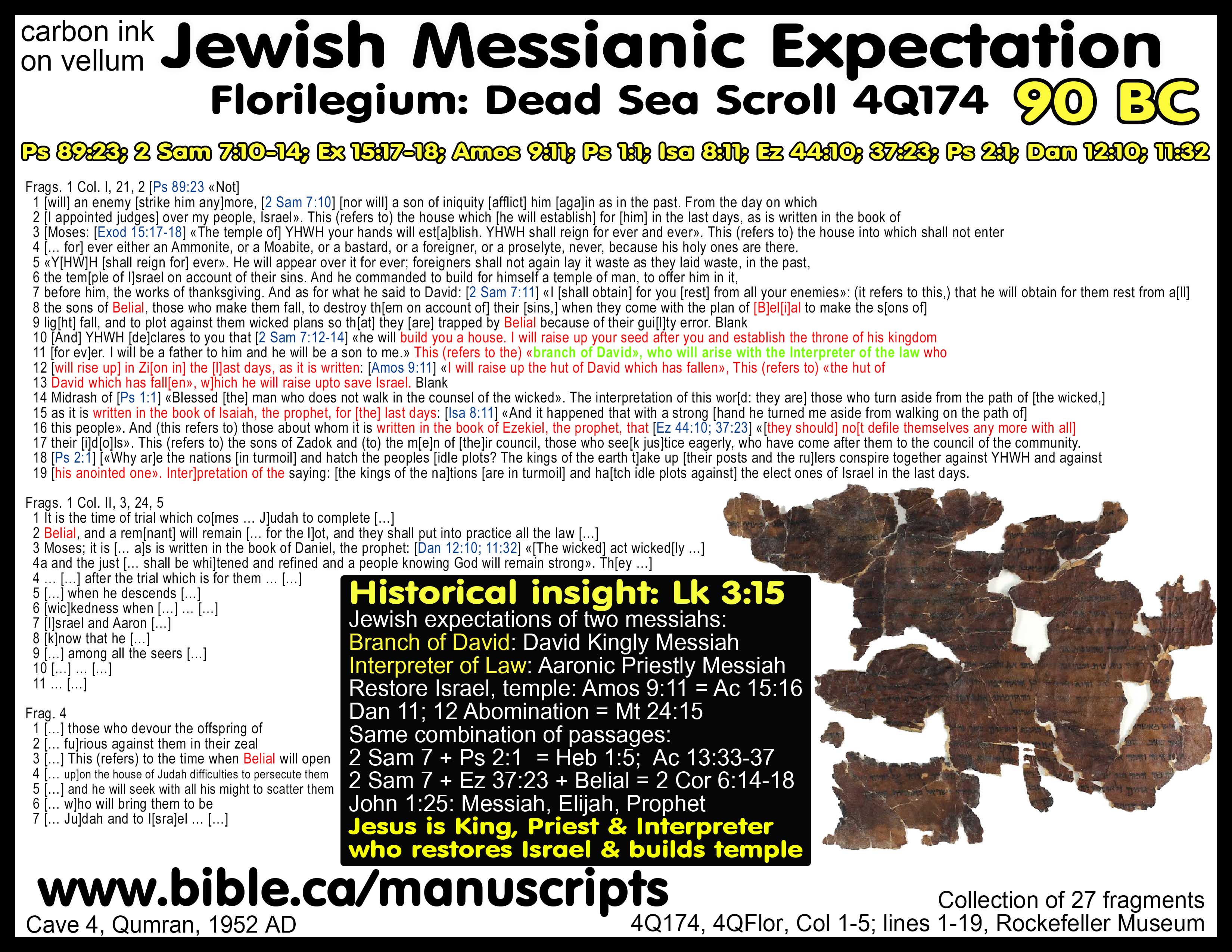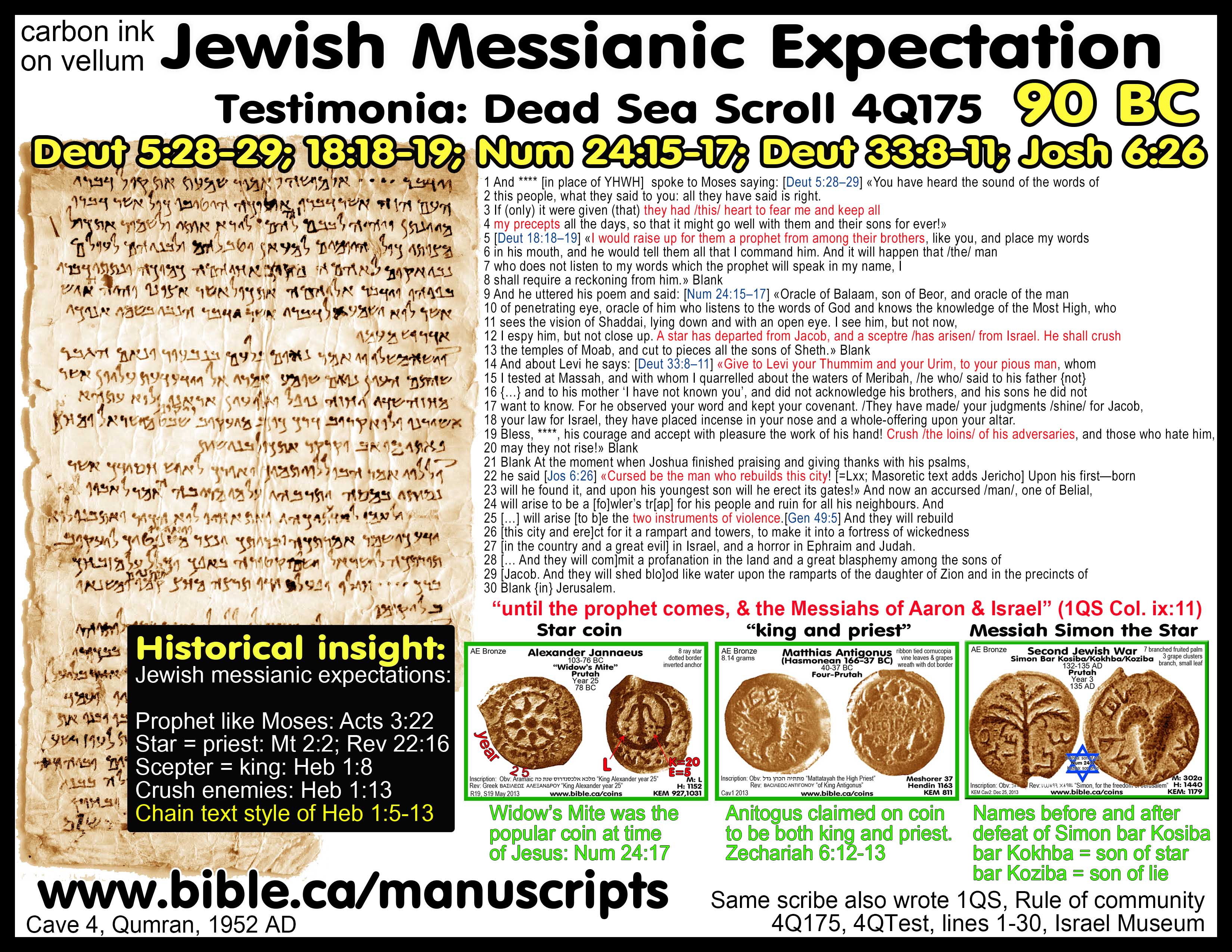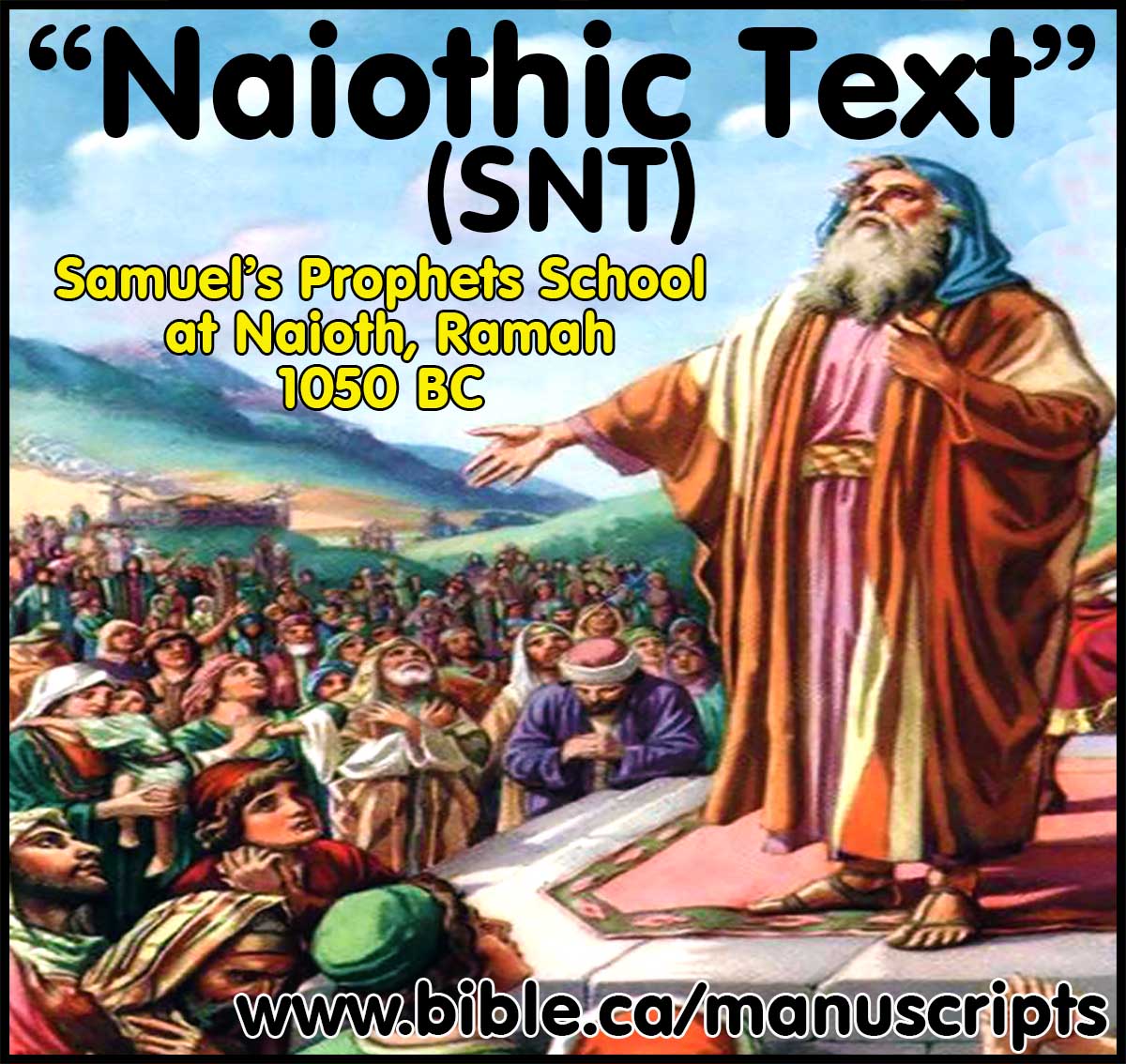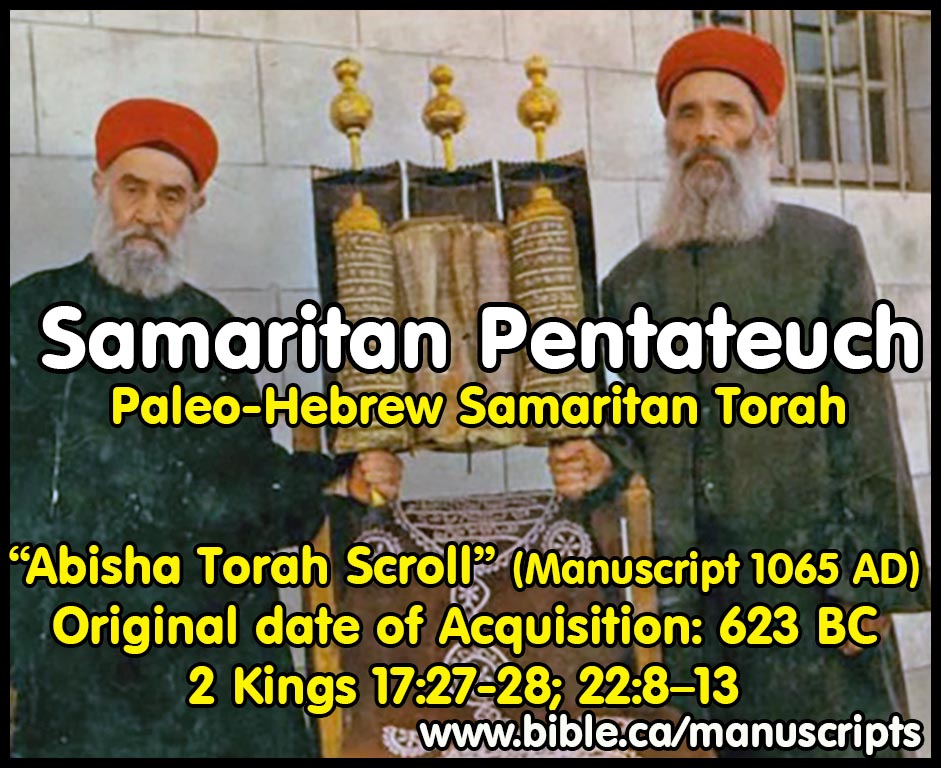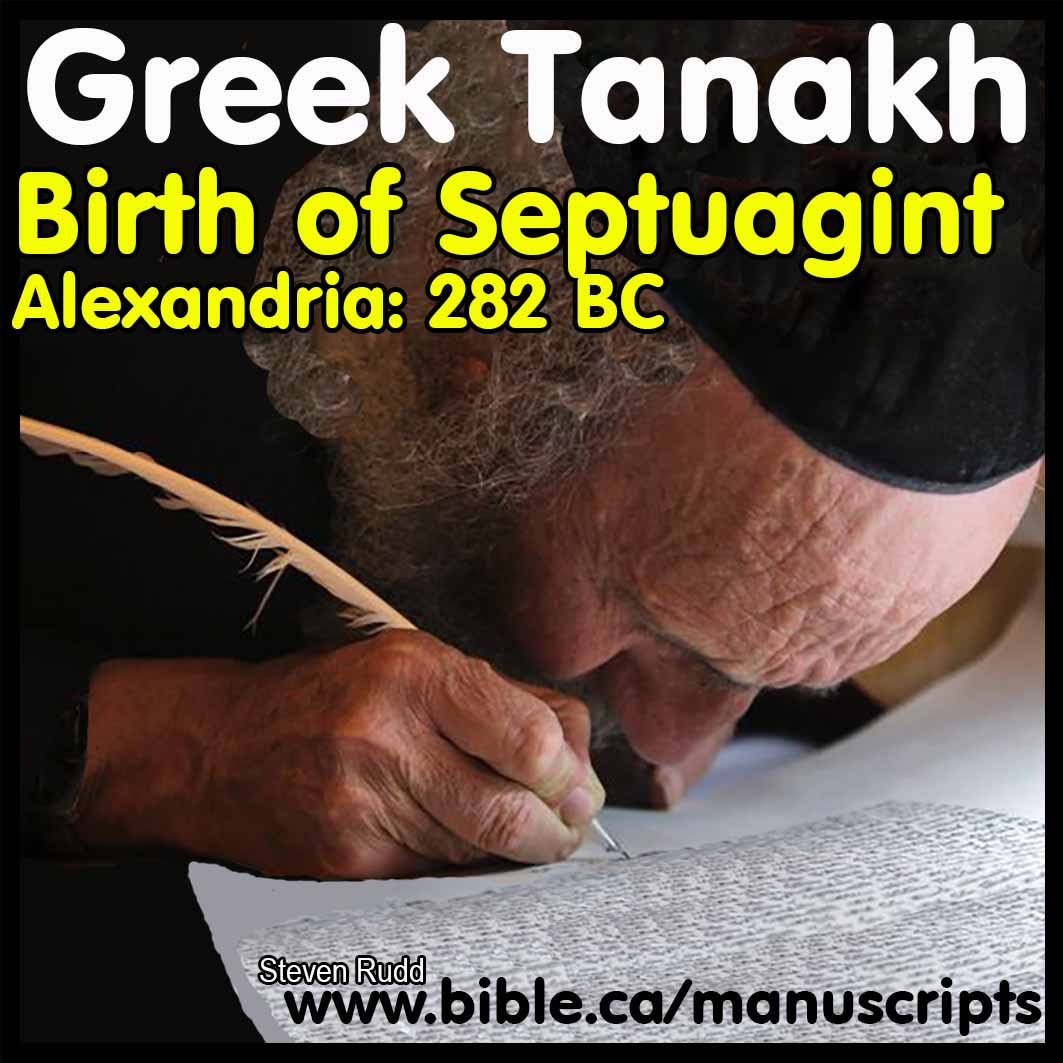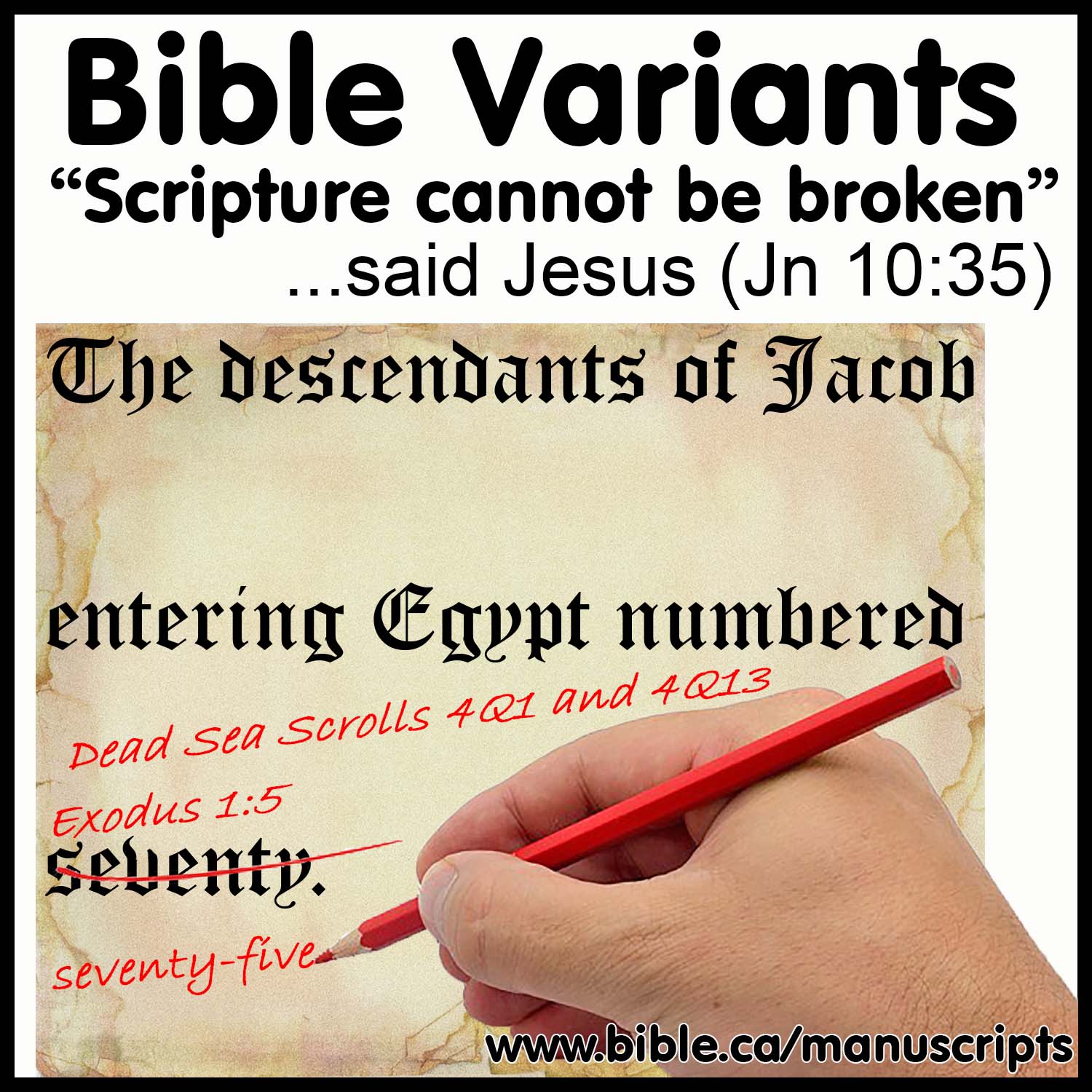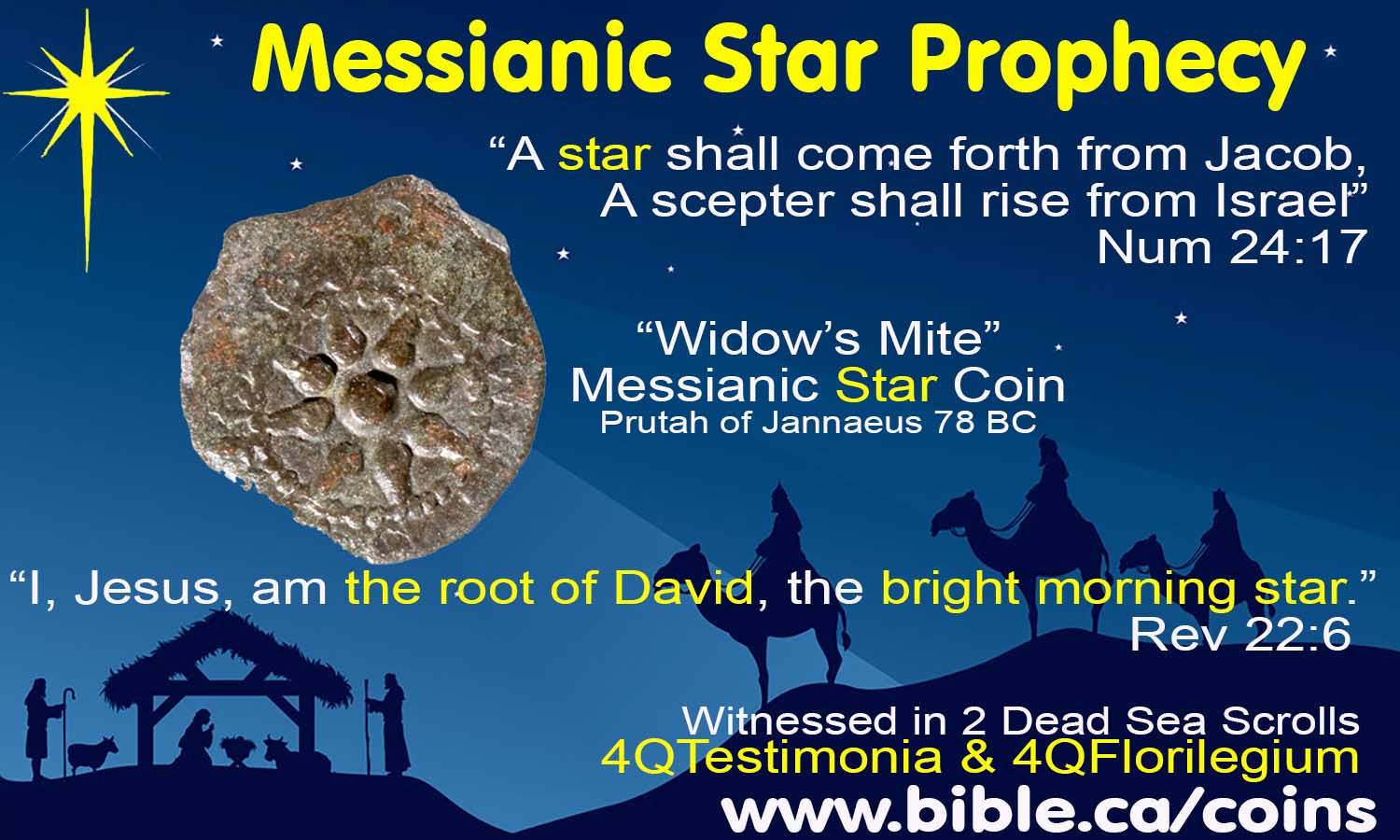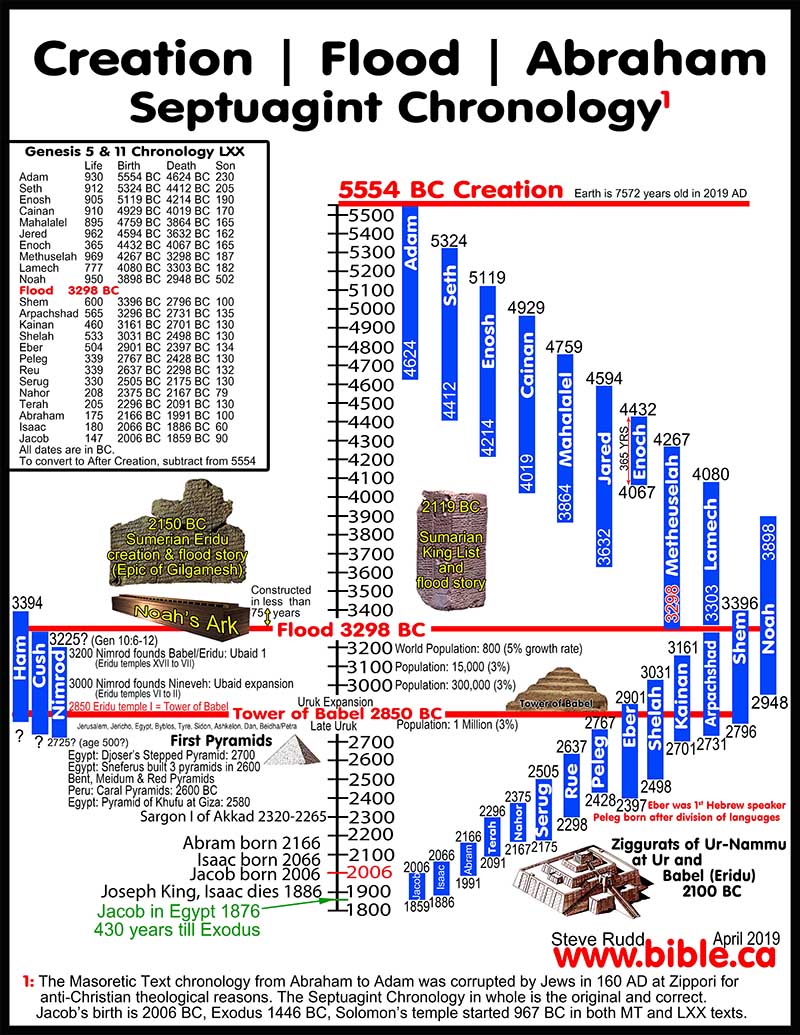Jesus was Trilingual
Aramaic: Jesus native tongue
Aramaic and Greek, Jesus was Trilingual: 30 AD
The Greek Septuagint LXX
The Textual transmission of the Old Testament
"Scripture cannot be broken" (Jesus, John 10:35)
Steve Rudd 1017
Introduction:
1. Working languages at the time of Christ: 30 AD:
|
Working languages at the time of Christ: 30 AD |
|||
|
Default working language |
Other languages spoken |
Language of worship |
|
|
Jesus Christ |
Aramaic Syriac |
Greek, Aramaic Hebrew |
Septuagint (Galilee) |
|
Jews in Canaan |
Aramaic Syriac |
Greek |
Septuagint |
|
Jews outside Canaan |
Greek |
Aramaic Syriac |
Septuagint |
|
High Priest: Temple, Jerusalem |
Aramaic Hebrew |
Greek, Aramaic Syriac |
Aramaic Hebrew (Masoretic) |
|
Romans |
Greek |
Latin |
Septuagint |
1. After the Babylonian Captivity of 605-536BC, the Jews used the Hebrew language less and less until the time of Alexander the Great when almost none of the Jews spoke Hebrew anymore.
2.
Outside of Judea the Jews spoke Greek in their
synagogues and used the Septuagint exclusively from 280 BC, hundreds of years
before the time of Christ. Here is a Greek synagogue building dedication
inscription from Schedia Egypt dating to 240 BC:
See also: Detailed
outline on the Schedia inscription
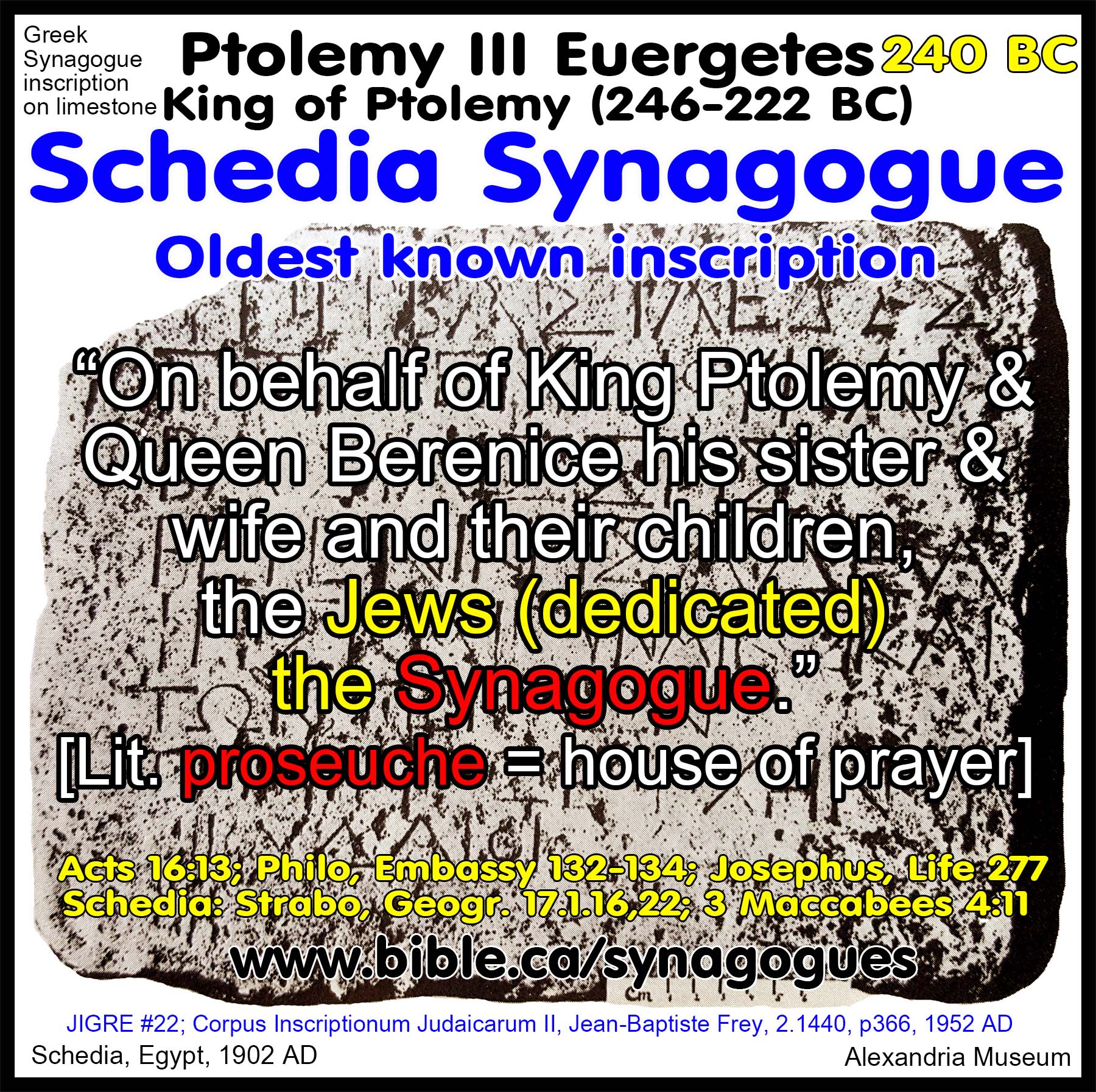
3. By 200 BC, Hebrew became a specialized language of the "Jerusalem elite" unknown by the common masses.
4. By the time of Christ, Hebrew was a foreign language in the land of Israel except in the Temple.
a. The only place Hebrew continued to be spoken was by the temple priests in Jerusalem.
b. Nobody spoke Hebrew in Judea except for the "Vatican Temple Elites" in Jerusalem. Just as Latin is the official language of the Vatican in Rome, so too Hebrew was the official language of the Jerusalem temple.
c. Nobody even knew Hebrew in the first century AD except for the High priests, Scribes, Pharisees and Sadducees.
d. The Twelve apostles did not even need to know Hebrew to reach the lost sheep of Israel who spoke Aramaic and Greek.
e. It's ironic that when the High priest in 30 AD and the Pope toady addressed their crowds, nobody understood either of them without a translator.
f.
If the common Jew visited the temple services conducted
in Hebrew, it was exactly like sitting in a Catholic Latin church service
today.

I. Jesus was trilingual: Hebrew, Aramaic and Greek
A. Jesus was Trilingual in Aramaic, Greek and Hebrew
1. First century Judea spoke 4 languages:
a. Hebrew: The religious language of the Jerusalem High priests, Sadducees, temple elites, very much like Vatican Latin today.
b. Aramaic: The language of the common Jew including Jesus.
c. Greek: The language of commerce and common language of the Jews everywhere.
d. Latin: The official language of the Roman empire.
2. Evidence of first century trilingualism:
a. "Today, thanks to the study of both inscriptions and archaeological data, as well as to other linguistic studies, it is accepted that in 1st century Palestine there was trilingualism." (The Septuagint in Context: Introduction to the Greek Version of the Bible, Marcos, N. Fernández, p333, 2000 AD)
3. Jesus was trilingual:
a. Jesus was trilingual in that he was raised in Aramaic Nazareth, read from the Greek Septuagint in the Nazareth synagogue (Luke 4:17-19) and was fluent in Hebrew when speaking in the Temple with the priests.
b. "It would not be out of place, then, to expect that Jesus spoke Greek in addition to Hebrew and Aramaic. It is quite possible that Jesus spoke Greek to Pontius Pilate in Matt. 27:11–14 and John 18:33–38, to the centurion in Matt. 8:5–13, and to “the woman of Canaan” in Matt. 15:22–28." (Bible and Spade, Vol. 7, No. 1, p 19, 1978 AD)
4. Jesus may have been fluent in Latin:
a. Latin is the official administrative language of the Roman Empire and was not widely used by the public.
b. Just as Hebrew was the official language of the “Jerusalem Temple elites” but not the masses, so too Latin was the language of Pilate, Herod and other Roman commanders.
c. There is no evidence Jesus spoke Latin in the New Testament.
d. The scene where Jesus speaks to Pilate is sometimes appealed to as evidence that Jesus spoke Latin to Pilate. The problem with this theory, is that Pilate as the governor of Judea, would most certainly have been fluent in both Aramaic and Greek. Therefore, Jesus could have spoken to Pilate in either Aramaic or Greek.
e. It is interesting that the inscription over Jesus’ head on the cross was in Latin for the Roman soldiers, Aramaic for the native Judean’s and Greek for the general masses but not Hebrew.
B. The sign on Jesus’ cross was in Latin, Greek and Aramaic BUT NOT HEBREW:
- The sign above Jesus' head “JESUS THE NAZARENE, THE KING OF THE JEWS.” was tri-lingual as seen in the Aramaic (Jews), Latin (Romans/legislative) and Greek (World/commerce) inscription Pilate put on Jesus' Cross. (John 19:20)
- Hebrew was the professional academic language of the Temple that the officiating Sadducees, scribes and Pharisees used, the very group who tried and crucified Jesus.
- It is interesting that Pilate's sign DID NOT use "Temple Hebrew" but native Aramaic language of the masses in Judea.
- Pilate clearly designed the inscription to annoy the temple academics by not only by the wording that emphasized the difference of the two verdicts where the three Jewish trials judged Jesus guilty but the three Roman trials judged Jesus innocent, but by snubbing them altogether by using the Aramaic of the common Jew and not the "temple Hebrew" known only by the scribes and priests.
- The inscription therefore, was a direct communication to the general population and not the "temple professionals" who in fact incited the general population to crucify Jesus at the very reluctant hands of the Romans.
2. "But as Dalman pointed out, words such as Γαββαθᾶ in John 19:13 which are described as Ἑβραϊστί are actually Aramaic. The Greek phrase calls the dialect “Hebrew” only in the sense that Hebrews or Jews were using it, just as the reference in Daniel 1:4 to the “tongue of the Chaldeans” does not refer to the native Semitic language of the Chaldeans but to Aramaic which they had adopted (cf. Dan. 2:4). (Greek, Hebrew Aramaic, or Syriac?, E. M. Yamauchi, Bibliotheca Sacra, 131, p322, 1974 AD)
- Five times John refers to Hebrew but we are certain it is Aramaic BECAUSE the word itself he uses is specific to Aramaic NOT Hebrew.
- “Bethesda” (Jn 5:2) "Now there is in Jerusalem by the sheep gate a pool, which is called in Hebrew [Aramaic] Bethesda, having five porticoes." (John 5:2)
- “Gabbatha” (Jn 19:13) "Therefore when Pilate heard these words, he brought Jesus out, and sat down on the judgment seat at a place called The Pavement, but in Hebrew [Aramaic], Gabbatha." (John 19:13)
- “Golgatha” (Jn 19:17) "They took Jesus, therefore, and He went out, bearing His own cross, to the place called the Place of a Skull, which is called in Hebrew [Aramaic], Golgotha." (John 19:17)
- "rabboni" (Jn 20:16) "Jesus said to her, “Mary!” She turned and said to Him in Hebrew [Aramaic], “Rabboni!” (which means, Teacher)." (John 20:16)
e. "Therefore many of the Jews read this inscription, for the place where Jesus was crucified was near the city; and it was written in Hebrew [Aramaic], Latin and in Greek." (John 19:20)
4. We can be certain that Hebrew was not one of the three languages on the sign of Jesus’ cross.
C. Jesus’ default/native Language was Aramaic:
1. Nehemiah’s “language of Ashdod” was Aramaic which had totally replaced native Hebrew:
a. "In Palestine after the Return [536 BC]., Aramaic gradually took the place of Hebrew in ordinary intercourse, and after the time of Alexander Greek became to some extent a rival of Aramaic." (An Introduction to the Old Testament in Greek, H. B. Swete, p8, 1914 AD)
a. Even after 100 years had passed after returning to Judea from captivity, in 440 BC, Nehemiah is frustrated that the Jews in Jerusalem spoke Aramaic and not Hebrew "As for their children, half spoke in the language of Ashdod [Aramaic], and none of them was able to speak the language of Judah, but the language of his own people." (Nehemiah 13:24)
b. Archeologically an Aramaic "Persian period … ostracon describing a delivery of wine" was found at Ashdod indicating that Aramaic was the working language of Ashdod. (Ashdod excavations, Moshe Dothan, 1962-1969 AD)
c. In Jerusalem, Nehemiah needed to translate the Hebrew scriptures into Aramaic so the Jews could understand it. "They read from the book, from the law of God, translating to give the sense so that they understood the reading." (Nehemiah 8:8)
d. In 410 BC, the Jewish Elephantine letters to Jerusalem were all written in Aramaic.
e. "In the centuries before the Christian era Hebrew was replaced as the vernacular in Palestine by Aramaic. The evidence from the development of the Targums, paraphrases in Aramaic of the Hebrew Old Testament, proves that many could understand the Scriptures more readily in Aramaic than in Hebrew." (Greek, Hebrew Aramaic, or Syriac?, E. M. Yamauchi, Bibliotheca Sacra, 131, p321, 1974 AD)
f.
The famous "Ossuary of James, son of Joseph,
brother of Jesus" inscription is in Aramaic not Hebrew.
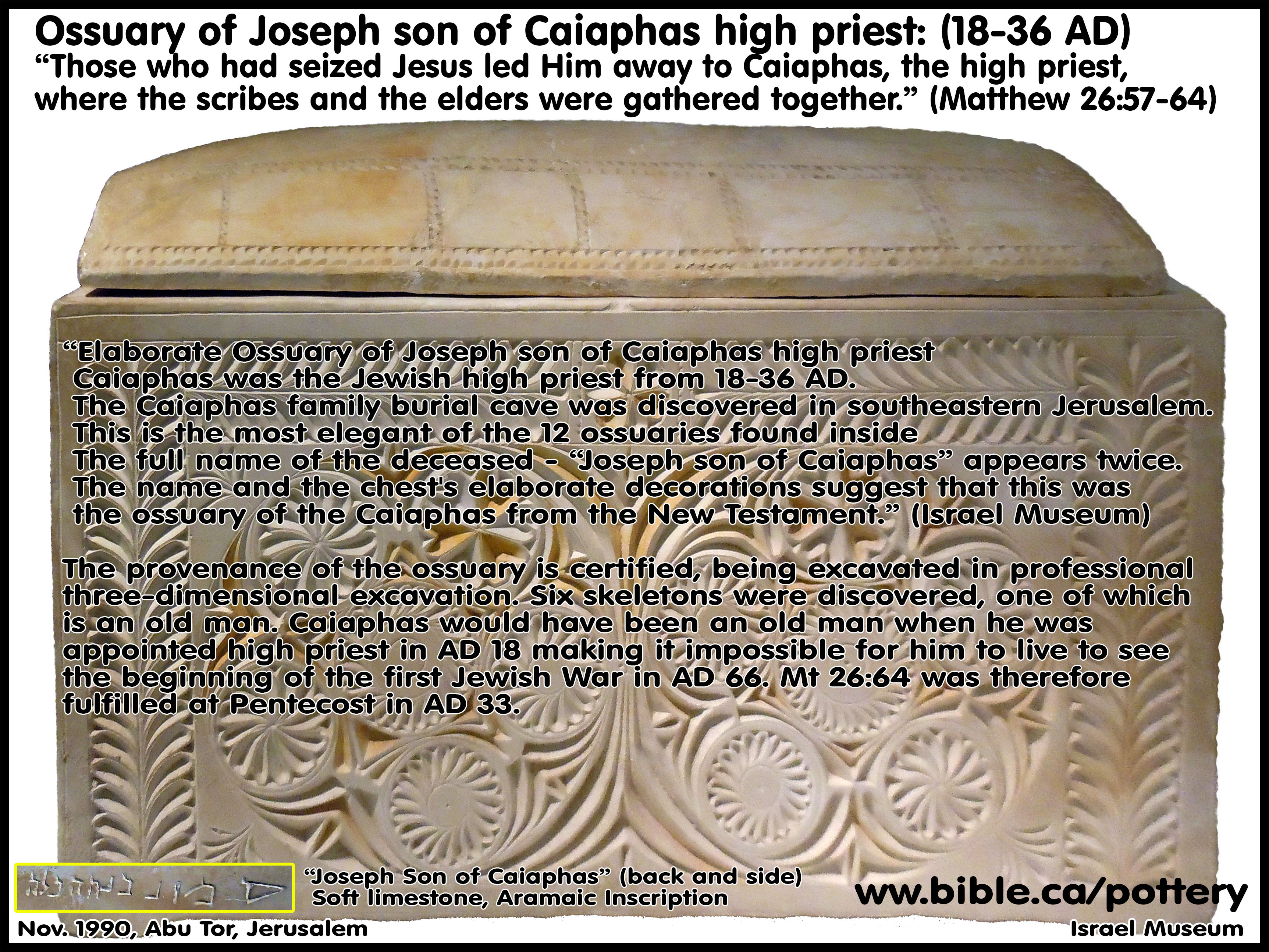
2. Examples of Jesus using Aramaic:
a. At the time of Christ, the Jews in Judea spoke Aramaic and Greek but outside Judea they spoke Greek only.
b. Jesus spoke the Beatitudes of Matthew 5 in Aramaic or Greek because his Jewish general audience did not speak Hebrew.
c. Most important is that Jesus defaulted to Aramaic not Hebrew when he cried to God in Aramaic: "My God, why have you forsaken me" (Mark 15:34).
d. Jesus gave Peter an Aramaic Name: “Cephas”. Jn 1:24. Additionally, Thomas, Matthew and Martha all had Aramaic not Hebrew names.
e. Jesus raised the little girl with the Aramaic words, "Talitha Cumi" (Mk 5:41).
f. "16:18 Peter in the Greek text is Petros and rock is petra. Petros is a moveable stone, large or small and petra is a ledge or shelf of rock. This statement by Christ may have been made with a gesture at the rocky structure nearby (see comment on 16:13). Some argue this distinction cannot be drawn because the Lord spoke Aramaic, a language in which such variations of meaning do not exist; however, the Holy Spirit in inspiration of the NT did use different vocabulary. Moreover, this perhaps was one of the times that Jesus spoke Greek, for He was trilingual, speaking Greek, Aramaic, and Hebrew. Otherwise the pun—Petros, petra—doesn’t make sense, and why mention the Aramaic translation at other times in the book unless such usage was uncharacteristic and the Greek was more normal." (Nelson’s New Illustrated Bible Commentary, Mt 16:18, 1999 AD)
3. "But as Dalman pointed out, words such as Γαββαθᾶ in John 19:13 which are described as Ἑβραϊστί are actually Aramaic. The Greek phrase calls the dialect “Hebrew” only in the sense that Hebrews or Jews were using it, just as the reference in Daniel 1:4 to the “tongue of the Chaldeans” does not refer to the native Semitic language of the Chaldeans but to Aramaic which they had adopted (cf. Dan. 2:4). (Greek, Hebrew Aramaic, or Syriac?, E. M. Yamauchi, Bibliotheca Sacra, 131, p322, 1974 AD)
4. Strictly Aramaic words used in the Greek New Testament. The five most authenticated Aramaic terms in the New Testament are:
a. Abba in Mark 14:36
b. Ephphatha in Mark 7:34
c. Mammona in Matt. 6:24, Luke 16:9, 11, 13
d. Raca in Matt. 5:22
e. Talitha cumi in Mark 5:41
5. Transliterations of Aramaic in the Greek New Testament. Only Mark and John (written post 70 AD) record and translate Aramaic words for their Greek readers living outside Judea and provide evidence that the natural working language of Jesus was Aramaic not Hebrew. John translates many Aramaic words into Greek so the readers, who spoke Greek and not Aramaic, could understand the meaning:
a. Jesus gave apostle Peter the Aramaic name “Cephas” (Lit. kepha) which means “rock”. John 1:42 tells us that while Peter’s original name from Jesus was Cephas (Aramaic) he became known in history (and to us) by the Peter, which is a Greek transliteration of Cepahs.
b. “Thomas” is a transliteration of Aramaic toma “twin”
c. “Matthew” is a transliteration of Aramaic Mattay; bar
d. Aramaic word for son "bar", is found in Bartholomew, Bar-Jonas, Barsabbas, Barabbas;
e. “Golgotha” is a transliteration of Aramaic golgolta “skull”
f. “Akeldama” is a transliteration of Aramaic haqel dema “bloody ground”
g. Martha is a transliteration of Aramaic mareta
h. “Maranatha” (1 Cor. 16:22) is a transliteration of Aramaic Maran “Our Lord” and eta “come.”
i. “Bethesda” (Jn 5:2) "Now there is in Jerusalem by the sheep gate a pool, which is called in Hebrew [Aramaic] Bethesda, having five porticoes." (John 5:2)
j. “Gabbatha” (Jn 19:13) "Therefore when Pilate heard these words, he brought Jesus out, and sat down on the judgment seat at a place called The Pavement, but in Hebrew [Aramaic], Gabbatha." (John 19:13)
k. “Golgatha” (Jn 19:17) "They took Jesus, therefore, and He went out, bearing His own cross, to the place called the Place of a Skull, which is called in Hebrew [Aramaic], Golgotha." (John 19:17)
l. "rabboni" (Jn 20:16) "Jesus said to her, “Mary!” She turned and said to Him in Hebrew [Aramaic], “Rabboni!” (which means, Teacher)." (John 20:16)
m. "Therefore many of the Jews read this inscription, for the place where Jesus was crucified was near the city; and it was written in Hebrew [Aramaic], Latin and in Greek." (John 19:20)
n. “Messiah” (Jn 1:41) "The Greek transliteration of the Aram. mešīḥâ (=Heb. māšīaḥ) occurs in the NT only here and in 4:25." (Gospel according to John 1–12, AYBC, Jn 1:41, 2008 AD)
o. "hosanna" (Jn 12:13)
p. "Maranatha" (Rev 22:20).
D. Jesus was fluent in "temple elite" Hebrew:
1. "It is also possible, however, as Segal argues, that Hebrew did continue as a spoken tongue; it seems unlikely, however, that this was outside the circles of the learned or the educated, i.e., learned Pharisaic, priestly or Essene circles. We must nevertheless allow possibly more than has been done before for the use of Hebrew in addition to (or instead of) Aramaic by Jesus Himself, especially on solemn festive occasions. There is a high degree of probability that Jesus began his career as a Galilaean rabbi who would be well versed in the Scriptures, and able to compose (or converse) as freely in Hebrew as in Aramaic." (Aramaic Studies and the Language of Jesus,” Matthew Black, p28, 1968 AD)
2. Jesus' use of Hebrew at age 12 in the temple contributed to their amazement of his knowledge of the scriptures in their "professional academic" language of Hebrew.
a. Hebrew was not commonly used by the Jewish masses but only the High priests and Sadducees in the first century.
b. The fact that Jesus knew the elite temple Hebrew at age twelve is part of the reason "all who heard Him were amazed at His understanding and His answers." (Lk 2:47).
c. If you spoke Hebrew at the time of Christ it was a rare thing and much rarer for a 12 year old boy to confound the authorities by speaking their elite Hebrew!
d. Today, imagine a 12 year old boy visits the Cardinals at the Vatican and refutes their Catholic doctrine in Latin, using the Latin Bible, both listening to them and asking them questions IN LATIN. That’s the equivalent to what Jesus did at age 12 in Jerusalem.
3. Strictly Hebrew origin words used by Jesus in the Greek New Testament:
a. Abaddon: Rev. 9:11
b. Amen: Matt. 31 times, Mark 13 times, Luke six times
c. Armageddon: Rev. 16:16
d. Beelzebub: Matt. 12:24; Luke 11:15, 18, 19
e. Belial: 1 Cor. 6:15
f. Cherubim: Heb. 9:5
g. Gehenna: Matt. 5:22, 29, 30; 10:28 and eight more times.
h. Hallelujah: Rev. 19: 1–6
i. Hos(i)anna: Matt. 21:9, Mark 11:9, John 12:13
j. Hyssop: John 19:29, Heb. 9:19
k. Immanuel: Matt. 1:22
l. Manna: John 6:31, 49
m. Messiah: John 1:41, 4:25
n. Qorban: Mark 7:11
o. Rabbi: Matt. 23:78; 26:25, 49; Mark 9:5, 11:21, 14:45
p. Rama: Matt. 2:18
q. Sabbath: Matt. 12:1; Mark 1:21–25, 2:17; Luke 4:16...42 times in all.
r. Satan: Matt. 4:1
s. Zion: Matt. 21:5
E. Jesus was fluent in Greek:
- Extent of Jewish Hellenism [ie. Greek culture] and the use of Greek at the time of Christ:
- "From about 700 b.c. Ἕλληνες [Hellenism] was used as a designation for the Greek tribes, cities and states bound by common custom, literature, culture religion, language and nationhood. … This is the place to consider the fate of the Jewish people in the Hellenistic age. The Jews were naturally caught up in the process of Hellenisation pushed by all the Seleucid rulers, esp. Antiochus IV Epiphanes. Many Jews both at home and of the diaspora learned Greek; many became Ἕλληνες [Hellenistic] in the full sense. Everywhere there were Jewish communities which used Greek even in worship and which read the Torah in Greek translation. … The Jews of the Greek diaspora were even more strongly affected. This is particularly well attested by the rich Hellenistic Jewish literature, whether in the form of translations (LXX etc.) or of original writings, both of which served both the needs of Jews who could not speak any other language but Greek, and also the ends of propaganda among the Greeks. For if the Jews became Greeks, many Greeks became Jews. And Judaism finally maintained itself as such even in the Hellenistic world." (Theological dictionary of the New Testament, G.Kittel, G. W.Bromiley, G. Friedrich, Hellenism/Greek, Strong’s #1671, 1964 AD)
- "The Public and Their Language: We do not know much about the public for which the translation [LXX] was created. If one believes the letter of Aristeas, the Greek Pentateuch was made by Palestinian Jews for a scholarly purpose: for the library of the Ptolemaic king. As a matter of fact, however, it was probably made for the Jews living in Egypt in the 3rd c. bce. Which language did they speak and write? The papyri suggest that they used the Greek of the Koine type. Some may have had a certain knowledge of Hebrew or Aramaic or both. The translation may have helped them in their understanding of the Scriptures written in Hebrew and Aramaic. There is a reasonable chance, however, that most of the early users read the LXX as a Greek text, without any knowledge of the Hebrew original. This is certainly the case when one turns to the members of the early Christian church for whom the LXX became their canonical writings. The LXX was also used by the Jews in Palestine. The scrolls found in Qumran are a conclusive witness to this. They appear to have read the LXX in the light of the Hebrew text and revised it accordingly. (A Greek-English Lexicon of the Septuagint, J. Lust, E. Eynikel, K. Hauspie, Introduction, 2003 AD)
- "In Palestine after the Return [536 BC]., Aramaic gradually took the place of Hebrew in ordinary intercourse, and after the time of Alexander Greek became to some extent a rival of Aramaic. In Alexandria a knowledge of Greek was not a mere luxury but a necessity of common life. If it was not required by the State as a condition of citizenship, yet self-interest compelled the inhabitants of a Greek capital to acquire the language of the markets and the Court. A generation or two may have sufficed to accustom the Alexandrian Jews to the use of the Greek tongue. The Jewish settlers in Lower Egypt who were there at the coming of Alexander had probably gained some knowledge of Greek before the founding of his new city; and the children of Alexander’s mercenaries, as well as many of the immigrants from Palestine in the days of Soter, may well have been practically bilingual. Every year of residence in Alexandria would increase their familiarity with Greek and weaken their hold upon the sacred tongue. Any prejudice which might have existed against the use of a foreign language would speedily disappear under a rule which secured full liberty in worship and faith. The adoption of the Greek tongue was a tribute gladly paid by the Alexandrian Jews to the great Gentile community which sheltered and cherished them." (An Introduction to the Old Testament in Greek, H. B. Swete, p8, 1914 AD)
- Jesus taught in Greek:
a. The Isaiah scroll in Jesus' home synagogue of Nazareth was in Greek not Hebrew in that Luke's quotation follows the Septuagint not the Masoretic text. (Luke 4:17-19)
b. Jesus taught in Greek: "The Jews then said to one another, “Where does this man intend to go that we will not find Him? He is not intending to go to the Dispersion among the Greeks, and teach the Greeks, is He?" (John 7:35)
c. Jesus would surely use Greek when He taught in the region of the 10 Greek capital cities known as "the Decapolis" (Mt 4:25).
d. "The one passage for which there is clearly the most contextual evidence for Jesus speaking Greek and having a record of what he said is Jesus’ conversation with Pilate recorded in all four of the Gospels (Matt 27:11–14; Mark 15:2–5; Luke 23:2–4; John 18:29–38). The second question shifts the evidence to see if Jesus’ use of Greek goes beyond a functional competence to a communicative competence, such that he could give an extended content-filled discourse. Scholars are far less certain that we have evidence of Jesus teaching in Greek, although the so-called Sermon on the Mount might be such an example (Matt 5–7). The circumstances that drew people together from such diverse ethnic and possibly linguistic groups would have required speaking in a common language, such as Greek." (The New Interpreter’s Dictionary of the Bible, Greek language and Jesus, Volume 2, Page 679, 2009 AD)
e. "J.N. Sevenster and R.H. Gundry have shown that Greek was widely known and used in both Judea and Galilee in the first century. Galilee in particular was a frontier area with a great deal of contact with Greek-speaking people and Hellenistic culture, and had been for centuries. The archaeological evidence indicates Greek was used by both literate and illiterate Jews (both scribes and fisherman) because Greek had become the official language of commerce and communication, and was even used in Jewish graveyards and synagogues. We find evidence of both good and clumsy Greek in various diverse settings indicating that: “No matter how very superficial and sketchy that knowledge was, many from all layers of society understood it and were able to speak and write it.” While this does not lead us to the conclusion that Jesus mainly spoke Greek to His disciples and audiences, it does mean that it is quite plausible that Jesus spoke Greek on some occasions (e.g., perhaps when He was in the Decapolis or when He spoke with the Syro-phonecian woman)." (Principles For Interpreting the Gospels and Acts, Ben Witherington III, Ashland Theological Journal, Vol 19, p 49, 1987 AD)
- The Greek Septuagint (Old
Testament) was the “King James Version” of first century Jews, including
Jesus and the Church:
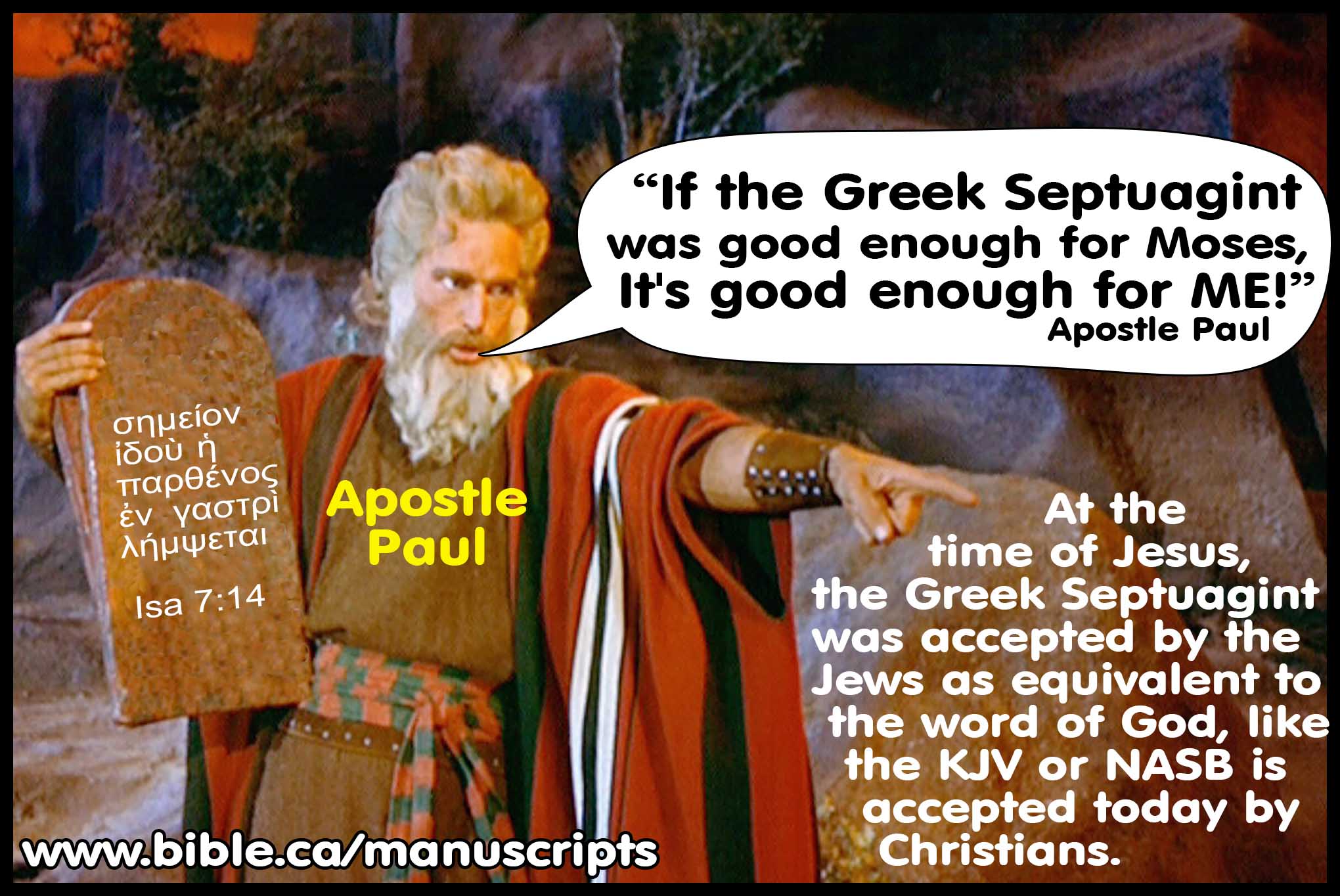
a. At the time of Jesus, the Greek Septuagint (LXX) was accepted by the Jews in their Synagogues as “equivalent to” the Hebrew Tanakh. (Old Testament).
b. The Greek Septuagint Old Testament was the standard text of Apostle Paul and the entire first century church.
c. Christians today view the English KJV or NASB as “equal to” the Greek and Hebrew originals. “If the Septuagint was good enough for Moses… IT IS GOOD ENOUGH FOR ME!!!” (Apostle Paul)
d. Jesus used the Greek Septuagint as his Bible: The Greek Septuagint was the standard issue Bible of every synagogue in the world including Judea.
e. "there is ample literary evidence for the notion that Scripture was read in Greek in religious gatherings of Greek-speaking communities from the first century BCE onwards." (Hebrew Bible, Greek Bible and Qumran, Emanuel Tov, p184, 2008 AD)
f. "Nevertheless … this [ie. Greek Septuaging-LXX] became the Bible of Greek-speaking Jews throughout the Eastern Mediterranean and was even used in Israel, which remained part of the Greek and the Hellenized Roman world. This is not so difficult to understand when one considers how many Greek-speaking Jews came to Jerusalem for the religious festivals, and even returned to live in their native land (without, however, leaving behind Greek as their primary language). Remarkably, fragments of Greek Exodus, Leviticus, Numbers, and Deuteronomy were even found among the Dead Sea Scrolls, a testimony to how far the Greek Bible penetrated the homeland of Israel." (Reading the Bible at Qumran, Alexandria, and Ephesus, D. A. deSilva Ashland Theological Journal, Volume 36, Page 29, 2004 AD)
II. Aramaic at the time of Christ:
Aramaic is a sister Semitic language to Hebrew that dates back to 900 BC and was the universal official language of the Assyrians (700 BC) and Babylonians (600 BC) the same way English is today throughout the world. When the Jews entered Babylonian during the captivity of 605-536 BC, they started speaking a new language called Aramaic. Since Aramaic and Hebrew are sister languages like Spanish and French, they replaced the Paleo-Hebrew alphabet of Samuel, with the Aramaic alphabet. It was during the Babylonian captivity (605-536 BC) and Persian empire, Aramaic became the working language of Jews in both worship and the marketplace until the advent of the Greek Kingdom.
1. Aramaic documents at Elephantine:
a.
In the collection
of Elephantine Papyri, which date to c. 420 BC, the native Jews at the
Hebrew temple in Elephantine on the southern border of Egypt with Nubia,
communicated back to Jerusalem in Aramaic, not Hebrew.
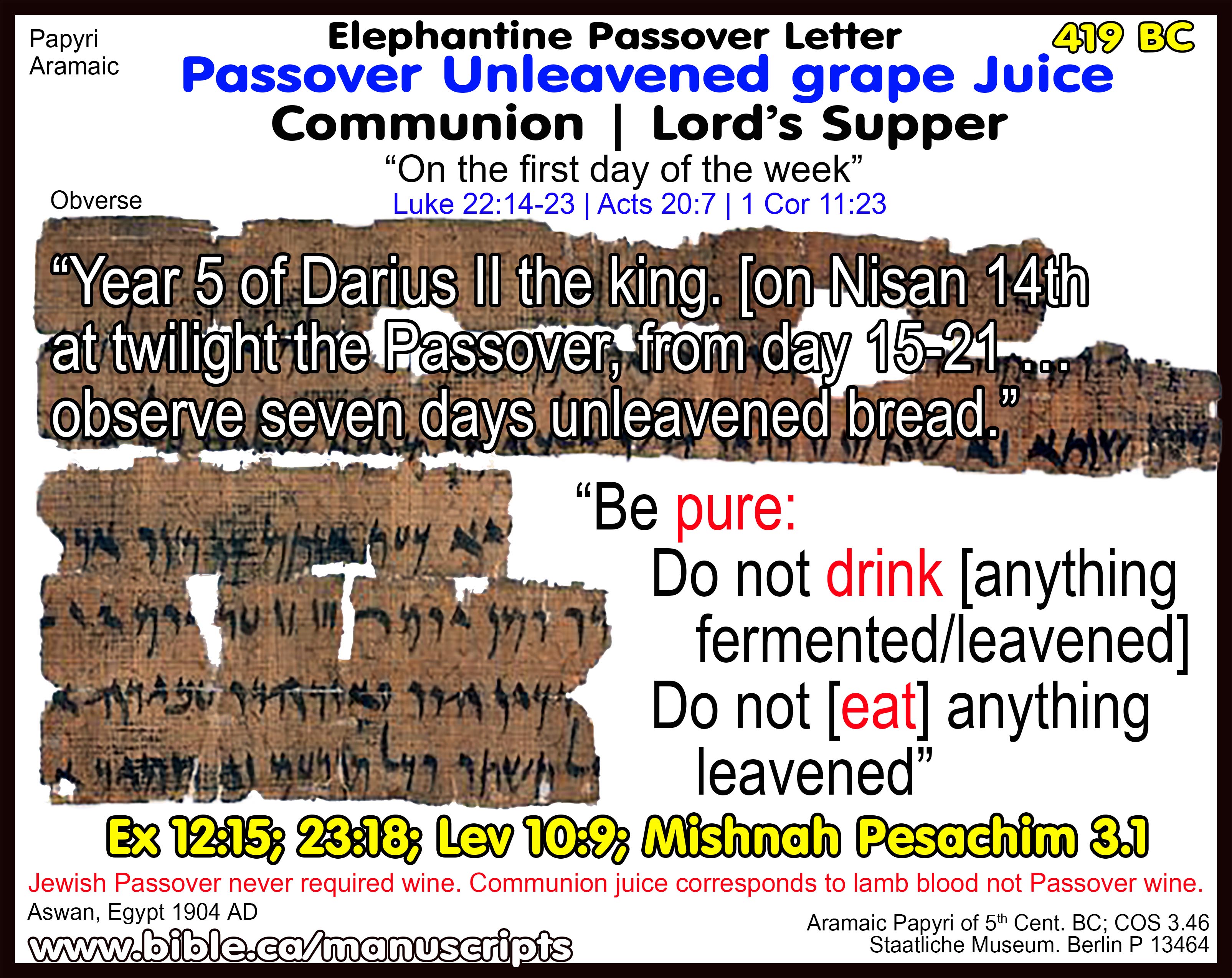
2. Aramaic Paleo-Hebrew seal impression inscriptions:
a.
"In the Samaria papyri, discovered in 1962 by
Tamireh bedouin north of Jericho (see “Bedouin Find Papyri Three Centuries
Older Than Dead Sea Scrolls,” BAR 04:01, by Paul Lapp), the official documents,
written during the second half of the fourth century B.C. (350–300 B.C.), are
in the Aramaic script and language, as we might
expect of legal-administrative texts. But the papyri were sealed with wax
bullae or scalings with inscriptions in the paleo-Hebrew
script—the script most likely to be known by local officials." (The
Evolution of Two Hebrew Scripts, Jonathan P. Siegel, BAR 05:03, 1979 AD)

3. Two passages in the Bible distinguish between the Mosaic Hebrew used from Abraham to Zedekiah and the Aramaic used from the Babylonian Captivity down to 70 AD:
a. Aramaic not Hebrew in Dan 4:25: The "handwriting on the wall" at Belshazzar’s feast was a play on words understood only in Aramaic, not Hebrew. (Daniel 5:25) Parts of Ezra (4:8-6:18;7:12-26) and Daniel (2:4-7:28) were written in Aramaic not Hebrew. Aramaic remained the dominant language in Judea after 70 AD as seen in the Old Testament being paraphrased into Aramaic (Targumim) by 100 AD and the Hebrew/Aramaic compilation of the Jerusalem Talmud commentaries (200 AD) and the Aramaic Babylonian (300 AD) Talmud. It was Rabbi Judah the Prince who compiled the Mishnah (oral tradition of Moses) in 189 AD who said of the Targum "He who translates a biblical verse literally is a liar, but he who elaborates on it is a blasphemer." (Rabbi Judah the Prince, 135 AD)
b.
Aramaic not Hebrew in Matthew 5:18: Jot and tittle: "But by the first century A.D. the
Aramaic script had become predominant. In Matthew 5:18, Jesus said, “Until
heaven and earth pass away, not one iota or one keraia shall pass
from the Law.” We know Jesus was referring to the
Aramaic script, in which the letter yodh (iota in Greek)
is the smallest letter of the alphabet, because yodh in paleo-Hebrew is
a large and more complicated letter. Keraia (literally “little horn”)
denotes the yodh or “crown” attached to certain letters in the Aramaic
script. Thus Jesus was familiar with the Pentateuch written in this script,
probably similar to the Isaiah scroll from Qumran. … Thus, by Alexander the Great’s
time, we find two languages (Hebrew and Aramaic) and two scripts (paleo-Hebrew
and square) being used simultaneously by the Jews. But by the first century
A.D. the Aramaic script had become predominant. (The Evolution of Two Hebrew
Scripts, Paleo-Hebrew or Phoenician script was used before Aramaic script was
introduced by Jews returning from Babylonia, Jonathan P. Siegel, BAR, June 1979
AD)
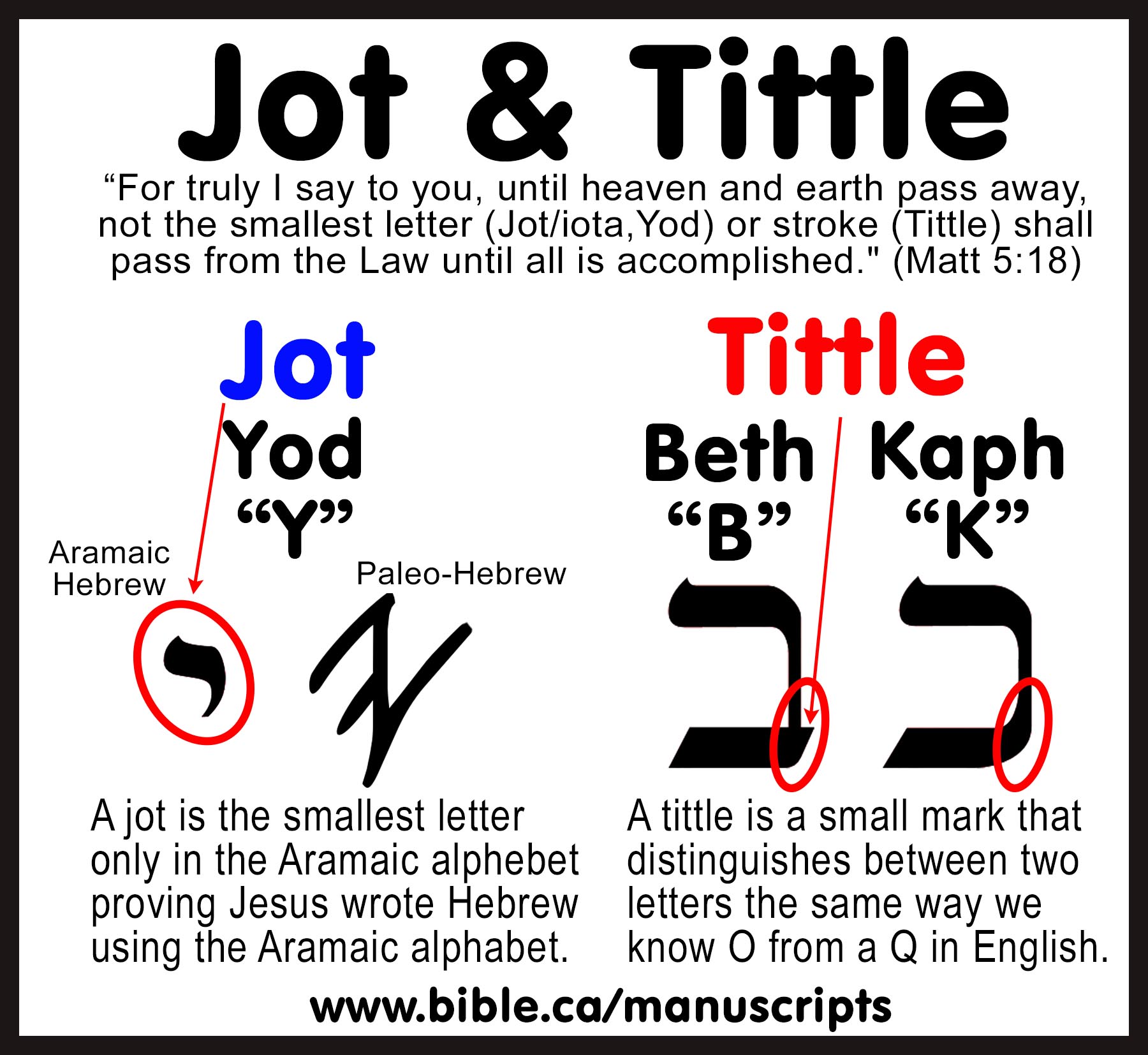
4.
When the Jews cast lots in 73 AD to decide who would commit suicide
first, they wrote their names in Aramaic not Hebrew on pottery sherds. 11 of
these Aramaic ostraca have been found including the leader, ben Ya’ir (Eleazar
ben Ya’ir).
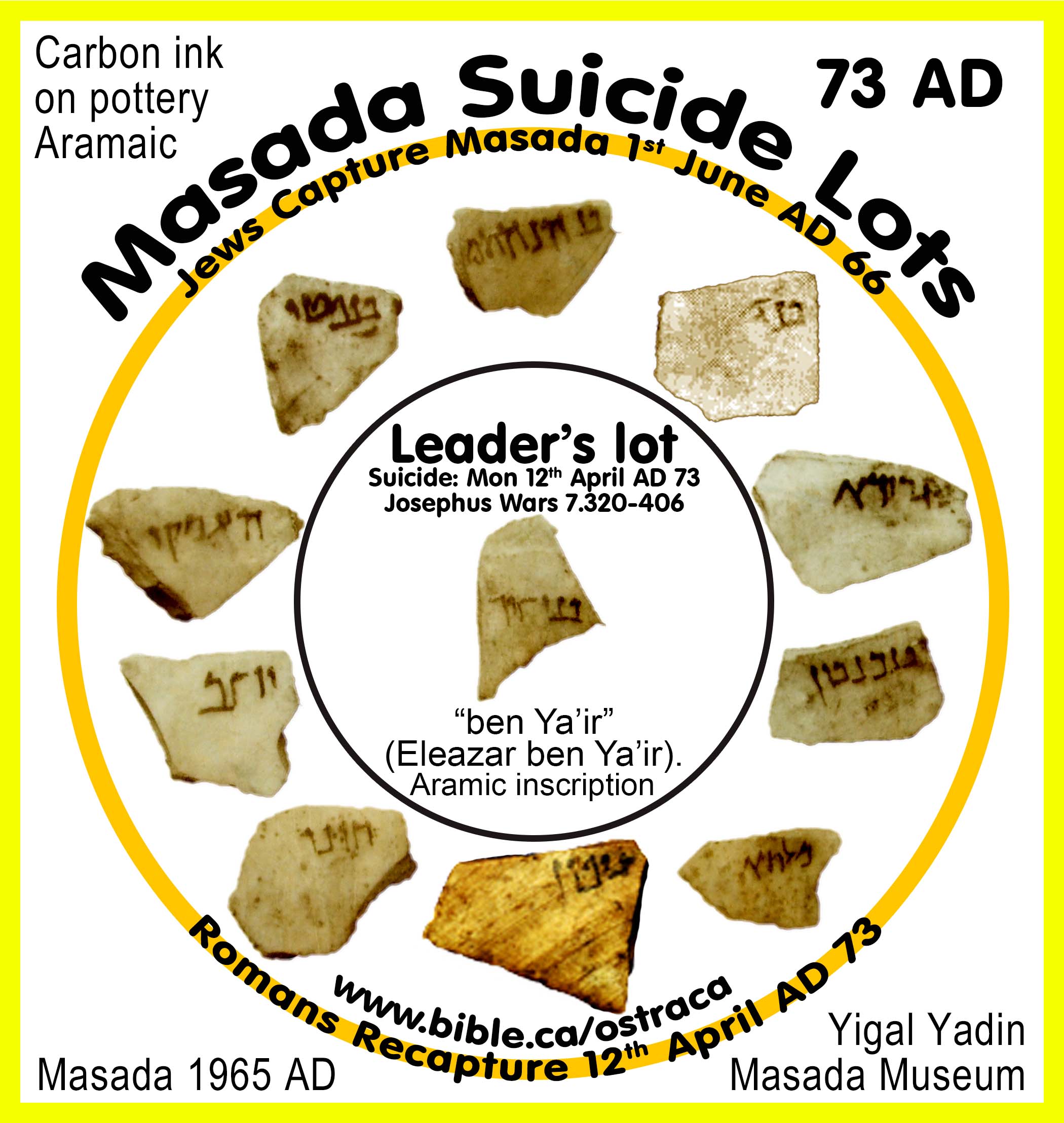
Jewish expectation of the Messiah in 90 BC was written in Aramaic in these two Dead Sea Scrolls:
|
The Septuagint LXX “Scripture Cannot Be Broken” |
|||||
|
Start Here: Master Introduction and Index |
|||||
|
Six Bible Manuscripts |
|||||
|
1446 BC Sinai Text (ST) |
1050 BC Samuel’s Text (SNT) |
623 BC Samaritan (SP) |
458 BC Ezra’s Text (XIV) |
282 BC Septuagint (LXX) |
160 AD Masoretic (MT) |
|
Research Tools |
|||||
|
Steve Rudd, November 2017 AD: Contact the author for comments, input or corrections |
|||||
By Steve Rudd: November 2017: Contact the author for comments, input or corrections.
Go to: Main Bible Manuscripts Page
